A piece of a 19th-century Ethiopian prince is going home
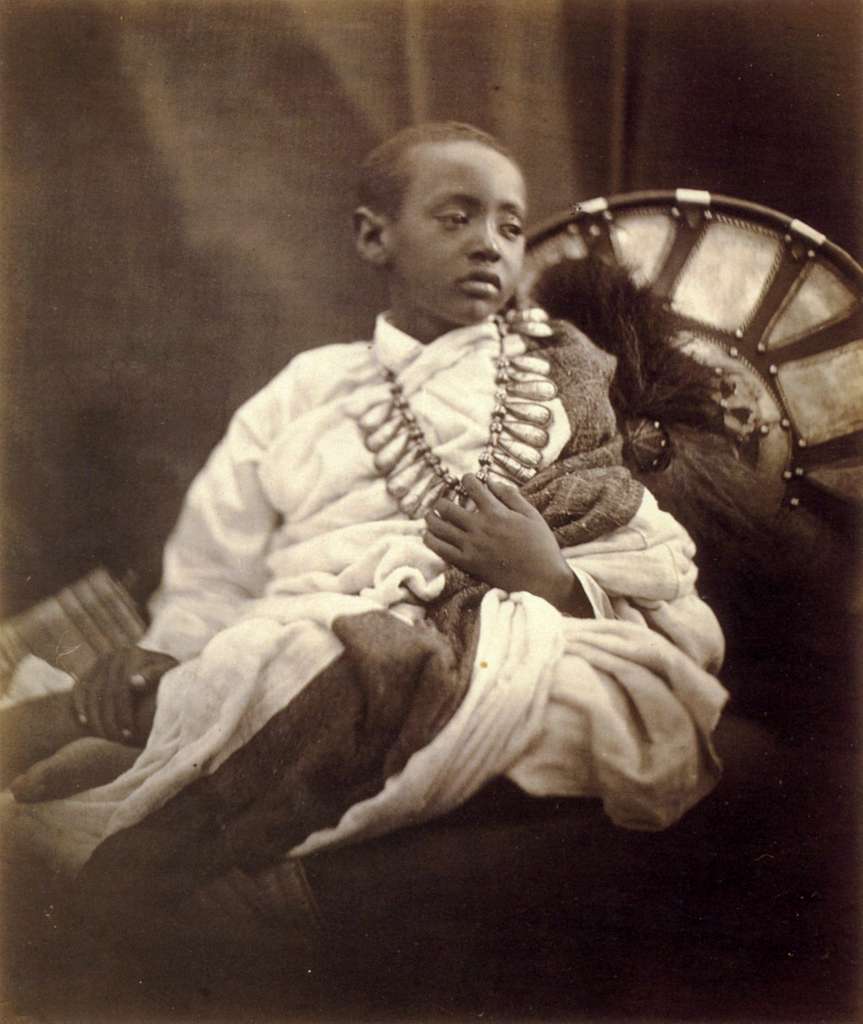
A lock of hair from the head of a 19th-century Ethiopian prince was handed over to representatives of his home country in a private ceremony in London on Thursday evening.
The celebration was marked with champagne and canapes as the Ethiopian ambassador to the United Kingdom received the hair of Crown Prince Alemayehu, who is buried at Windsor Castle.
"It's a very important part of our history … life was difficult for him," said ambassador Teferi Melesse Desta.
Other culturally and religiously significant items that were taken from Ethiopia 155 years ago, including a shield and three cups, were also returned Thursday night. The ambassador spoke of the the treasures "returning to their rightful place … where they can continue to inspire and educate for generations to come."
The handover is one of the latest instalments in a reckoning of heritage taking place in former imperial centres all over the world.
"This evening is an evening touched with magic," said Tahir Shah, one of the founders of the Scheherazade Foundation, the not-for-profit organization facilitating the returns.
"The returning of this lock of hair is a signal that restitutions can be made in a spirit of goodwill and respect, and we hope that they will inspire other restitutions to take place in the near future."
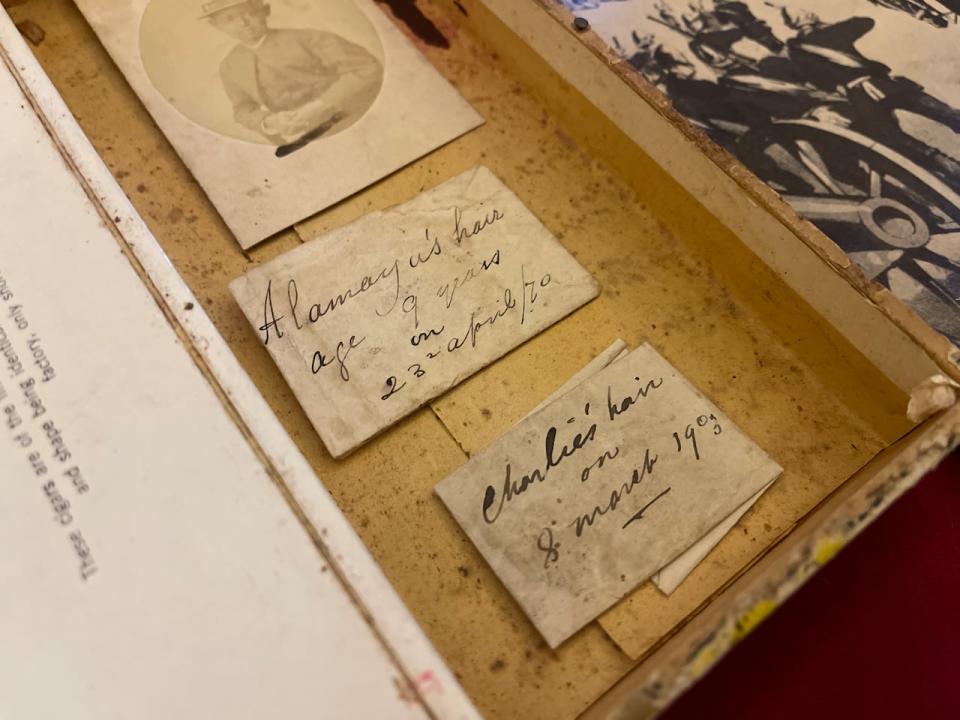
A lock of Prince Alemayehu's hair was given to Capt. Tristram Speedy, an officer in the British Army who was the prince's guardian before he was sent to boarding school. (Lauren Sproule/CBC)
Pleas for treasures of cultural and religious significance to be returned to their land of origin have been answered this year in Vatican City and in Edinburgh, where a totem pole was recently sent back to the members of the Nisga'a Nation in northwestern British Columbia.
"In the past, the answer was always no," said Dan Hicks, a British archaeologist and author of The Brutish Museums.
"In recent years, we've seen a real sea change in how that has been addressed … the idea of returning items on a case-by-case basis when they're asked for to be returned."
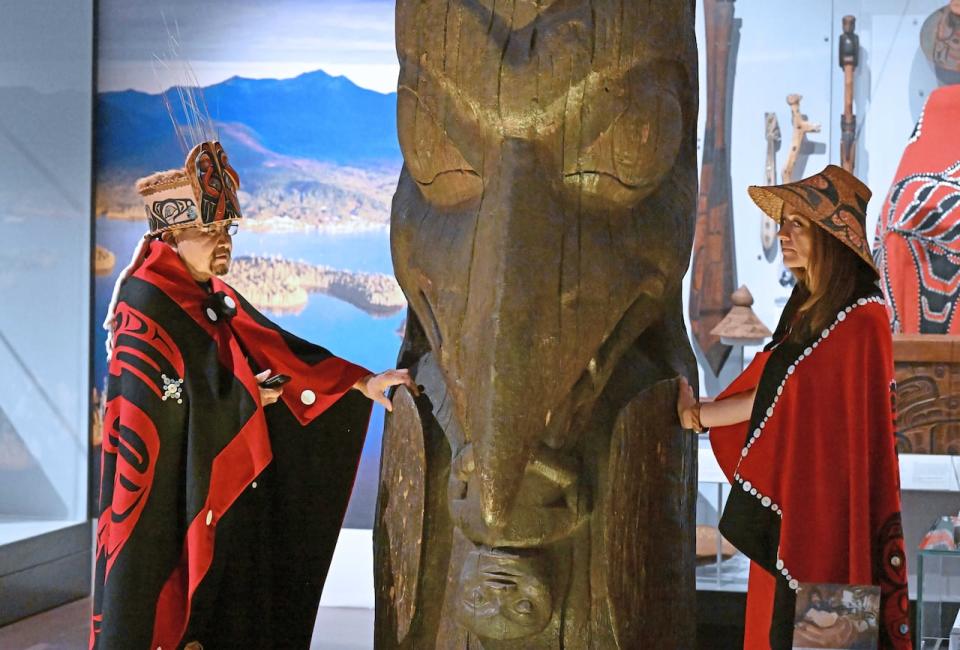
Sim’oogit Ni’isjoohl (Chief Earl Stephens), left, and Noxs Ts’aawit (Dr. Amy Parent) of the Nisga'a Nation stand with the Ni'isjoohl memorial pole in the National Museum of Scotland on Aug. 22, 2022. (Neil Hanna/National Museums Scotland)
Some of the items returned in Thursday night's ceremony were taken during the Siege of Maqdala in 1868, when British troops descended on the mountaintop kingdom in Abyssinia, now Ethiopia.
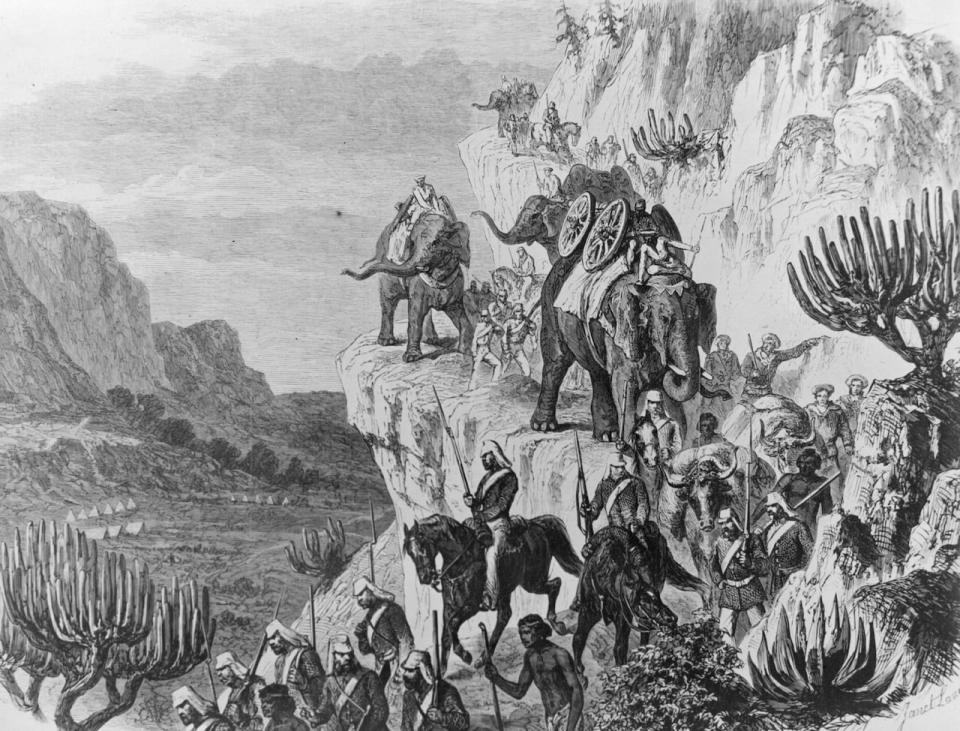
A British Army artillery convoy moves between Magdala and Antale in 1868. (Getty Images)
Representatives from the British Museum were part of the contingent that travelled to Maqdala, allegedly for the planned plunder of cultural heritage, according to an article published in the Cambridge University Press.
But it was more than just gold taken by the soldiers in the closing days of the dry season in Abyssinia. Among the cargo was a seven-year-old boy named Alemayehu.
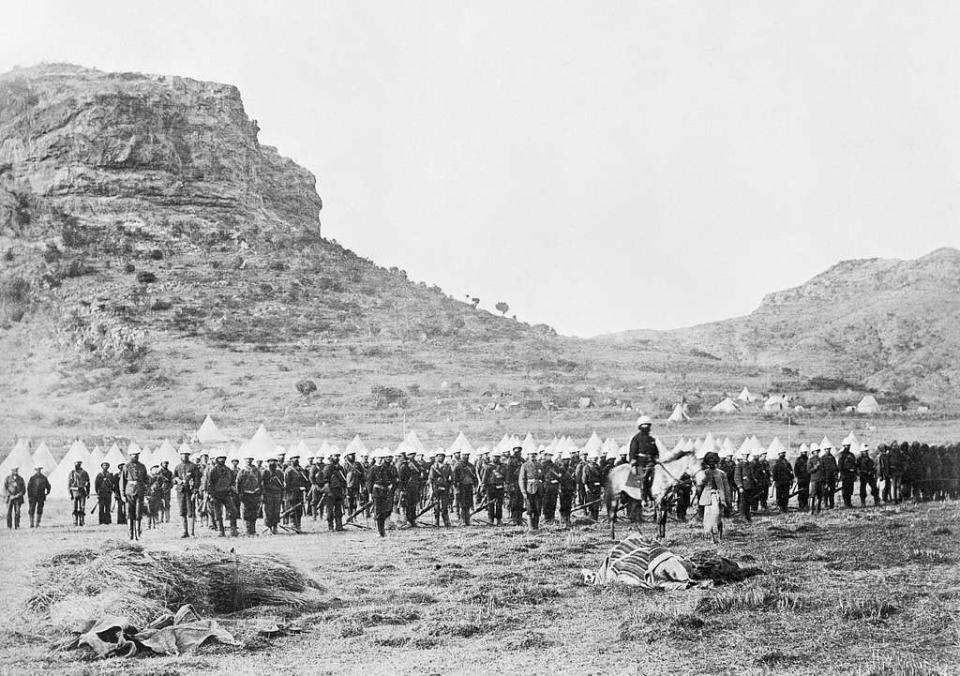
The Naval Brigade parade takes place beside Goon-Goona Rock during the Abyssinian Expedition in 1868. (Imperial War Museums)
Who was Prince Alemayehu?
A supposed descendant of King Solomon, Alemayehu was the only legitimate son of Emperor Tewodros II, who imprisoned several missionaries and diplomats in an attempt to persuade the British government into a military alliance.
This action was met with force in the form of 13,000 British and Indian soldiers. Emperor Tewodros decided he would rather die than fall captive to the invading army, so he took his own life as the battle encircled the walls of his fortress.
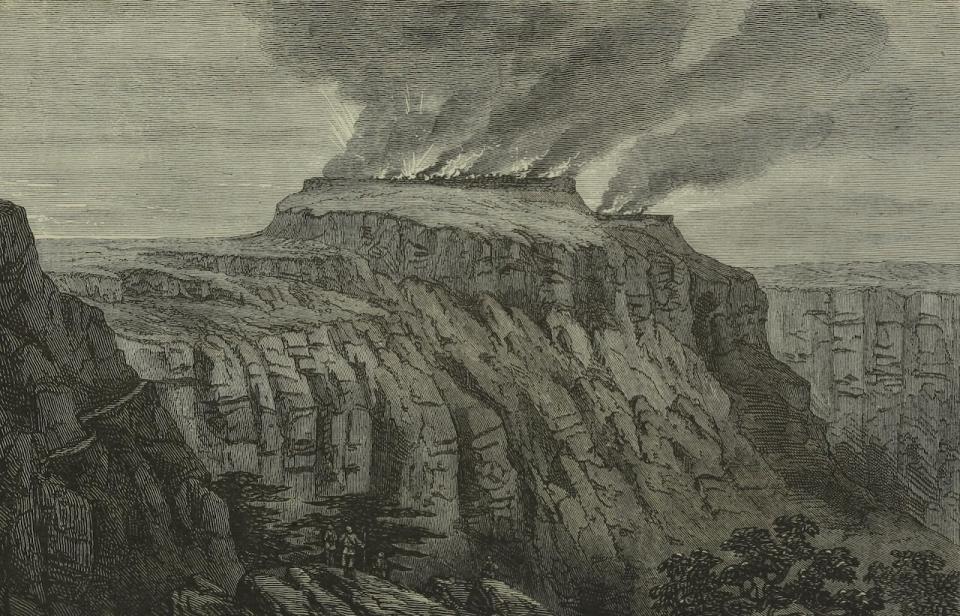
Before leaving Maqdala, Gen. Robert Napier permitted his troops to loot and burn the fortress. The army also collected many objects of historical and religious significance that were taken back to England. (Henry M. Stanley)
Once the spears fell and the guns went quiet, Alemayehu and his widowed mother were taken in by the troops and prepared for the journey to England.
While his mother died en route, Alemayehu eventually made his way to English shores, where he was front-page news and became a recurring character in the diaries of Queen Victoria.
"Heard that the Emperor Theodore's poor little boy, whom we had been expecting since yesterday, had arrived.… Little Alamayan is a very pretty, slight graceful boy of seven with beautiful eyes," Victoria wrote on July 16, 1868, when the prince was invited to visit her on the Isle of Wight.
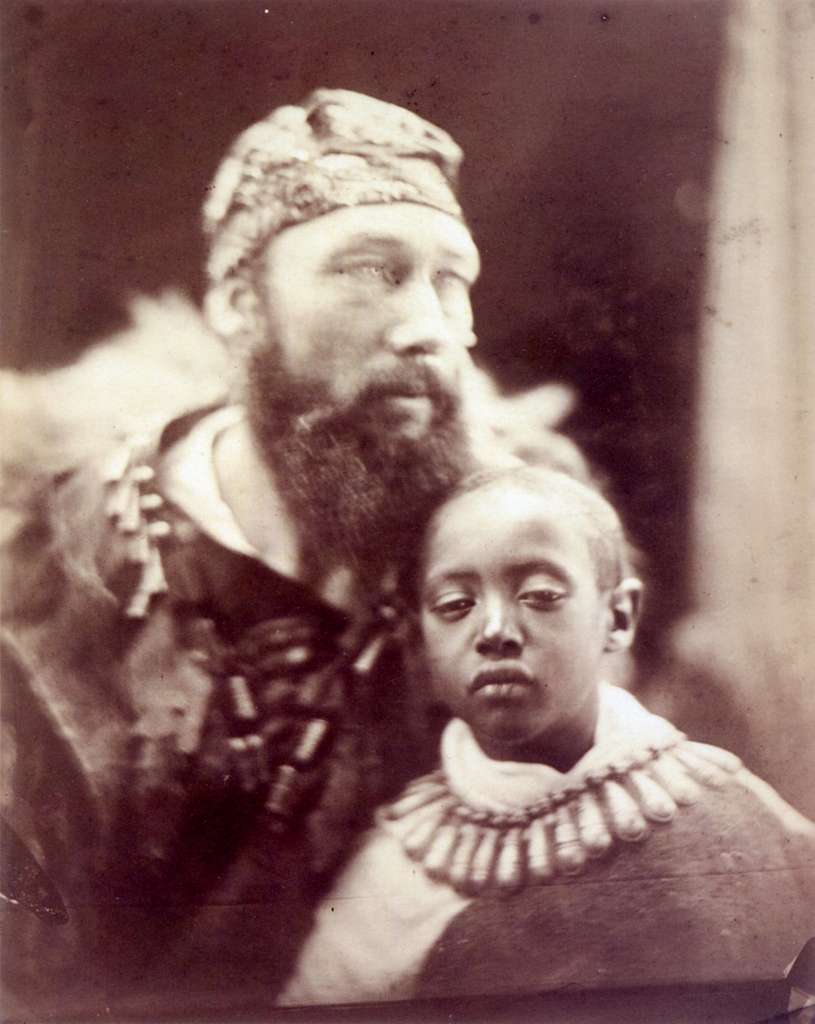
Prince Alemayehu and his guardian went to the Isle of Wight at the request of Queen Victoria in 1868. She was kept informed of Alemayehu's movement as a young boy until his death at the age of 18. (Julia Margaret Cameron)
"Capt. Speedy, who has brought him, says the poor boy will never leave him for a moment, and always sleeps near him."
Capt. Tristram Speedy was an officer in the British Army and the prince's guardian before he was sent to boarding school.
Alemayehu studied at numerous prestigious schools in England, performing well in sports but struggling academically, according to his school records.
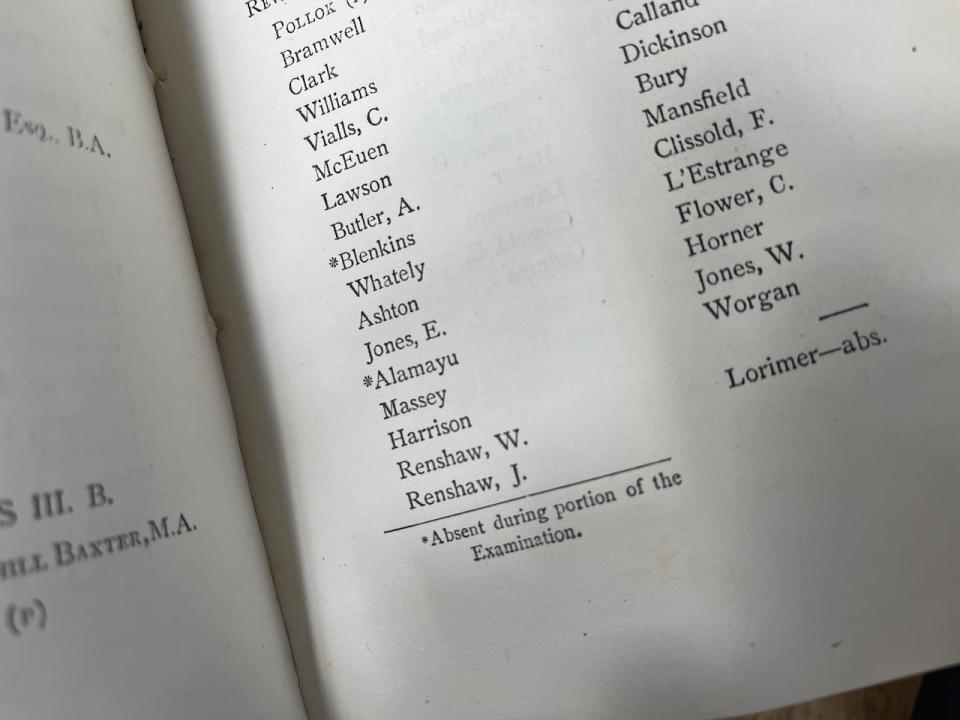
Prince Alemayehu studied at Cheltenham College in western England, where he was reportedly sick often as a result of difficulties he had with the cold English weather. His name appears here on a class list alongside his peers. (Lauren Sproule/CBC)
Speedy and Alemayehu kept in touch sporadically, with Speedy travelling to India and New Zealand, while the young prince's life came to an end in northern England shortly before his 19th birthday.
At Queen Victoria's request, he was interred in the catacombs of St. George's Chapel at Windsor Castle.
Leonie Turner, a descendant of Speedy's who found a lock of Alemayehu's hair among her family heirlooms, made the nearly 19,000-kilometre journey from New Zealand to London to deliver the parcel.
"I felt Prince Alemayehu's hair was a long way from home," she said.
Repair and restitution
Another prominent face at the forefront of the fight to repatriate the estimated hundreds of artefacts taken from Maqdala is Alula Pankhurst, the great-grandson of British suffragette Emmeline Pankhurst and a member of Ethiopia's National Heritage Restitution Committee.
"It's a gift of friendship from one family to another family, from one nation to another nation," said Pankhurst.
Pankhurst had travelled from his home in Addis Ababa to facilitate the handover of the items, which will be transferred to the national museum in Ethiopia's capital by way of the ambassador.
Pankhurst, who was born and raised in Ethiopia, told the CBC via email earlier that there are "people with a conscience who believe in the need to right earlier wrongs. Our institutions should offer to follow suit."
A few of the institutions Pankhurst is referring to are the British Museum, the Victoria and Albert Museum and Westminster Abbey, all of which are storing items taken from Maqdala.
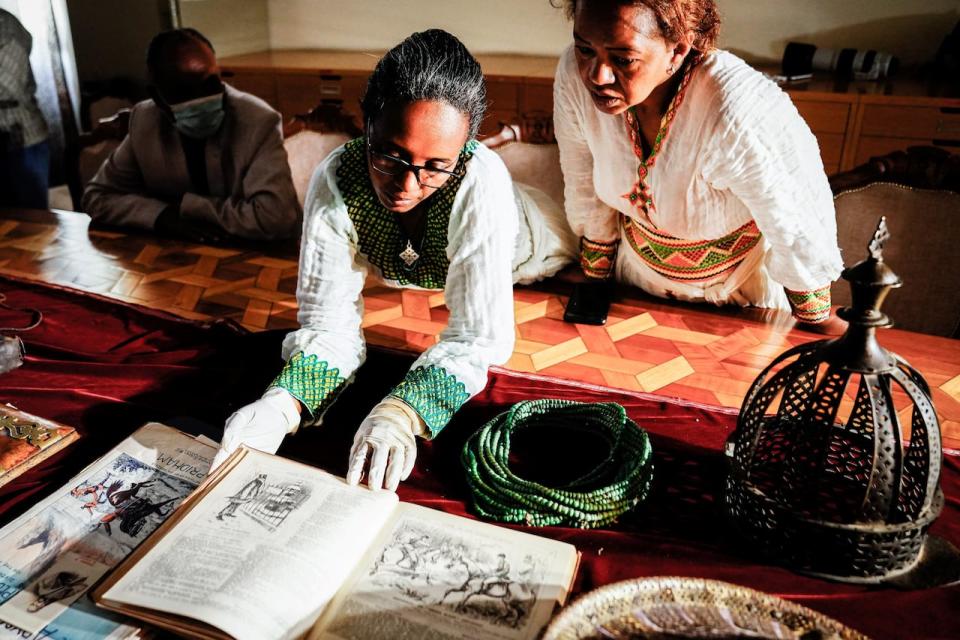
Staff look at recovered items to be on display at the National Museum in Addis Ababa on Nov. 20, 2021, as Ethiopia hailed the return of precious artifacts taken by British soldiers more than 150 years ago. (AFP/Getty Images)
CBC reached out to the British Museum for a comment on the existing restitution process and a spokesperson said: "The museum's sustained long-term ambition is to lend the objects to an Ethiopian Orthodox Church in Great Britain where they can be cared for by the clergy within their traditions."
Some of the items being stored in the U.K. are tabots, holy relics of the Ethiopian Orthodox Tewahedo Church. These tabots are so sacred they are only ever displayed to the public on holy days when they are covered in cloth and carried on the heads of priests, said Pankhurst.
The tabot being returned to the Ethiopian clergy on Thursday was found by art historian Jacopo Gnisci.
Gnisci monitors various markets "to keep track of the movement of Ethiopian artworks," he said.
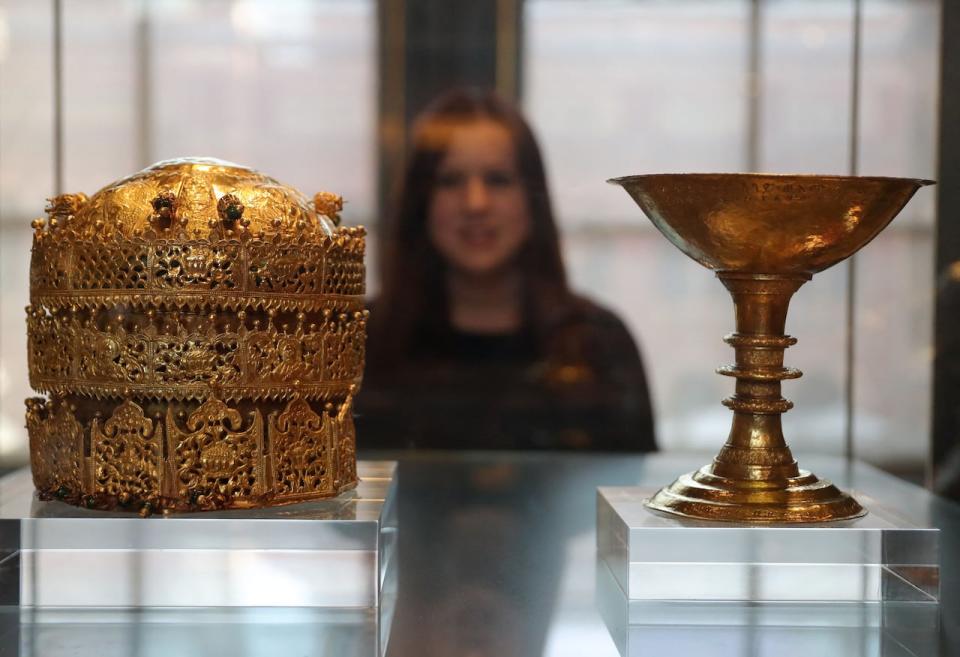
A employee poses in the Victoria and Alberta Museum in London on April 5, 2018, near a crown made in Ethiopia around 1740. (Daniel Leal/AFP/Getty Images)
"When I discovered that a tabot was going to end up in private hands … I felt it would be wrong to let that happen," said Gnisci, adding he initially did not want this repatriation to be made public because of the holy nature of the object.
But he ultimately decided "going public was the best way to kindle the debate around the restitution of the tabotat that are kept in museum collections across the world."
Artefacts have found their way as far afield as the Royal Ontario Museum in Toronto. It houses a communion plate, tapestry and drinking cup that can trace their "provenance to Ethiopia," a representative for the ROM said via email.
The representative said there are no active restitution dialogues taking place concerning the objects, which are in storage.
Changing times
Appeals for repatriation have extended beyond objects to human remains.
In 2007, Ethiopian President Wolde-Giorgis Girma wrote a letter to Queen Elizabeth requesting the repatriation of Alemayehu's body.
"At the heart of this is the fact that the British Museum and the British monarchy find themselves in exactly the same situation. Either they seek to keep in step with their times or sadly, they make themselves increasingly irrelevant to the world," said Hicks.
"Why would a modern monarchy want to hold on to the human remains of another monarch?"
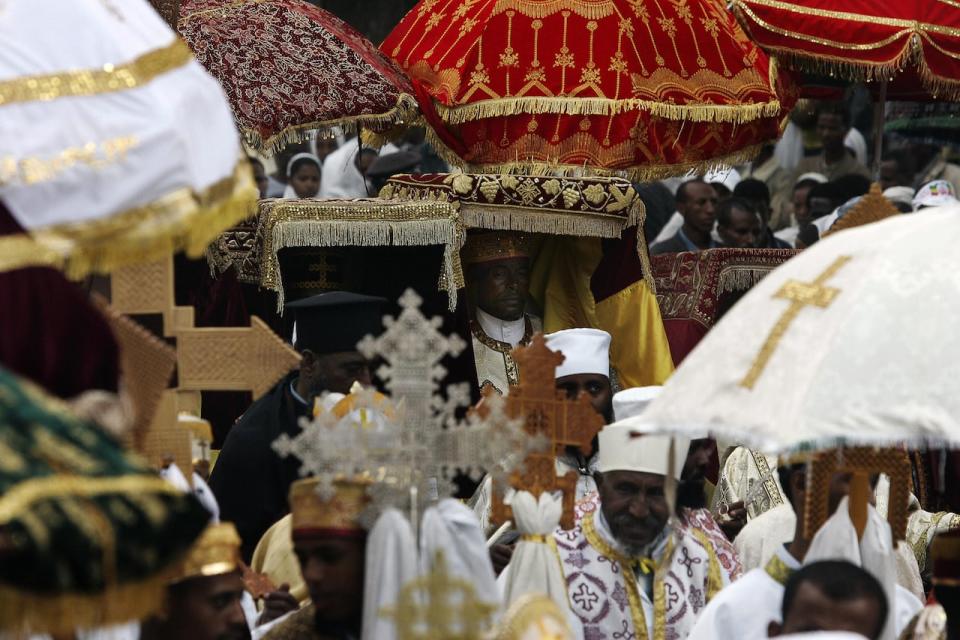
Ethiopian Orthodox priests parade a tabot through the streets of Addis Ababa on Jan. 19, 2006. (Marco Longari/AFP/Getty Images)
The request for Alemayehu's repatriation was reportedly rejected by Buckingham Palace, which cited "considerable practical difficulties" around his removal.
This sentiment was echoed by the palace earlier this year when the BBC reached out for a comment and was told: "It is very unlikely that it would be possible to exhume the remains without disturbing the resting place of a substantial number of others in the vicinity."
Critics have called this reasoning into question because human remains have been moved in the past. King Charles III's paternal grandmother was buried in St. George's Chapel in 1969 and her remains transferred to Jerusalem 19 years later.
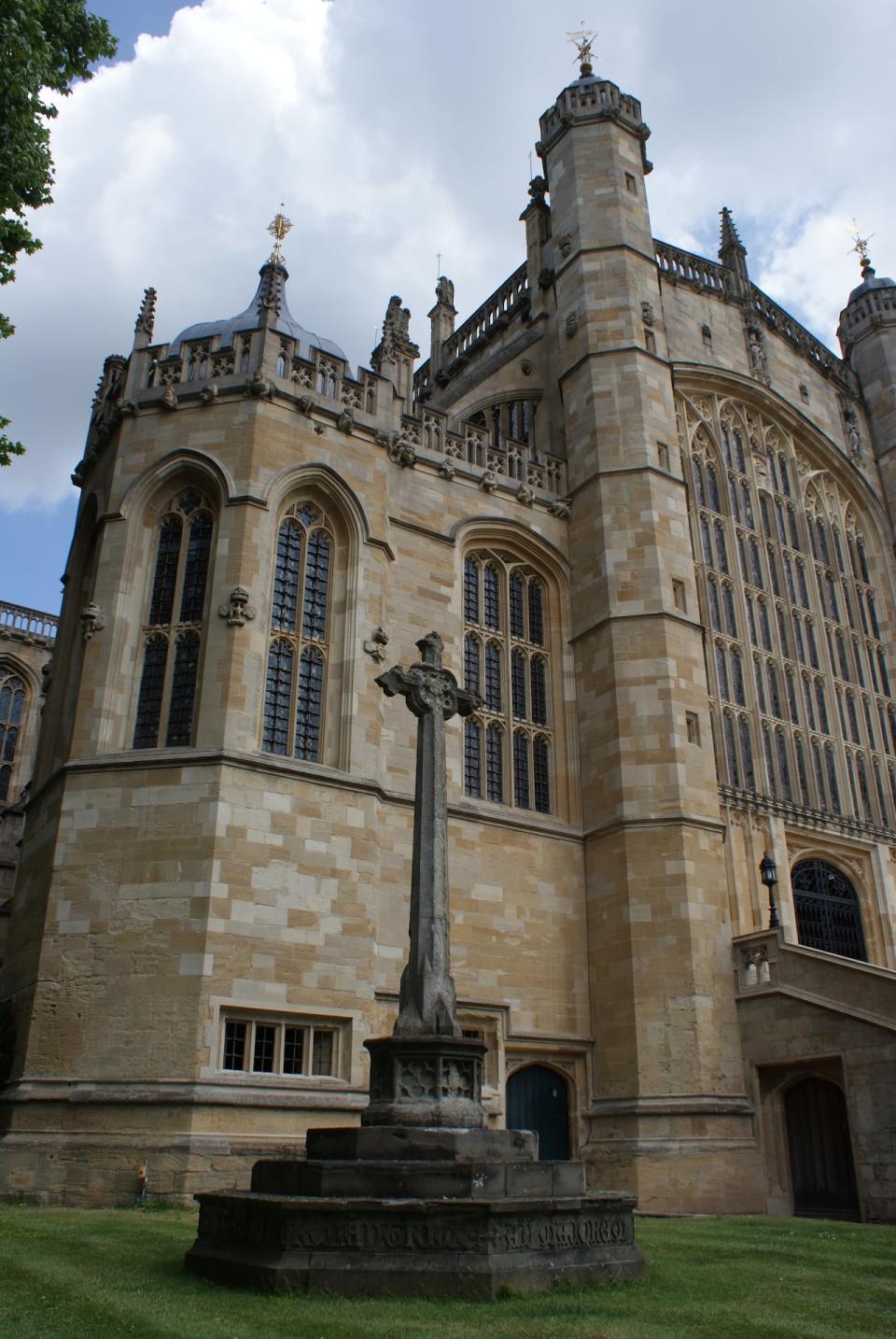
At Windsor Castle in Windsor, England, a cross stands in an area to the northwest of St. George’s Chapel where there are 47 burials, including that of Prince Alemayehu. (Windsor Castle)
Hicks believes King Charles is being badly advised to hold onto "old arguments."
"These issues over returns are not about sending back or trying to purge the past … they're about how institutions respond to reasonable requests in the present, which are about human dignity."
Last year, the remains of 18 Indigenous people were returned to Australia by two British museums, including the Pitt Rivers Museum in Oxford, England, where Hicks serves as curator.
"The sky hasn't fallen in on museums," said Hicks. "In many ways, this is making museums more relevant for their audiences … making them spaces for living, not for dying."


